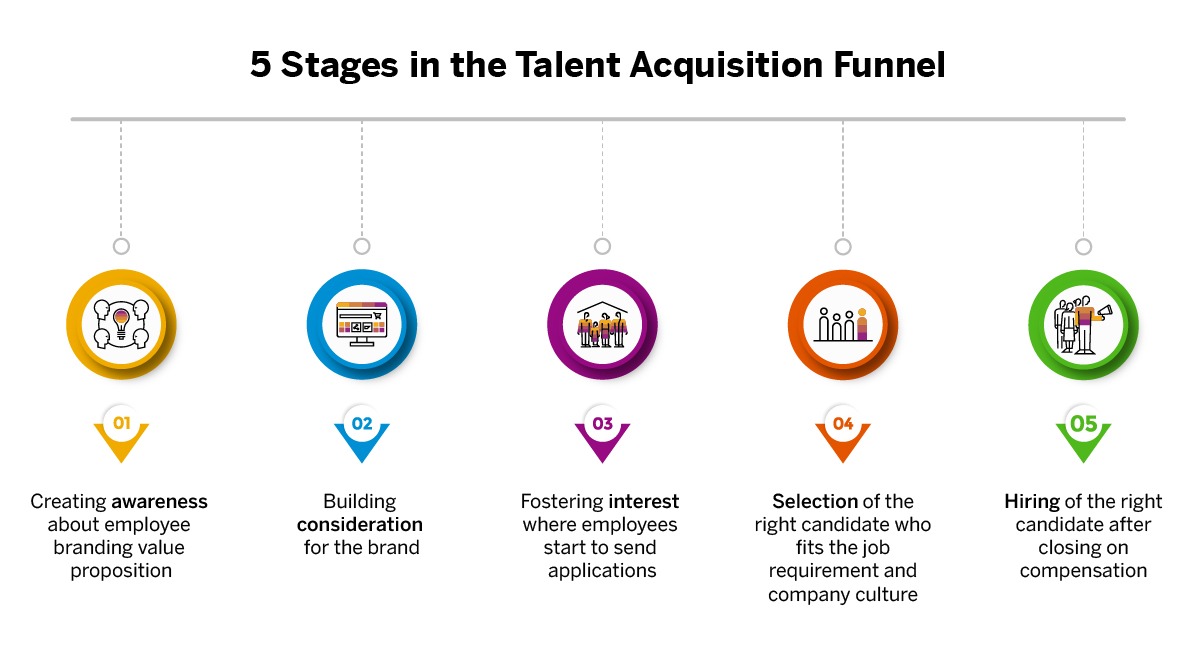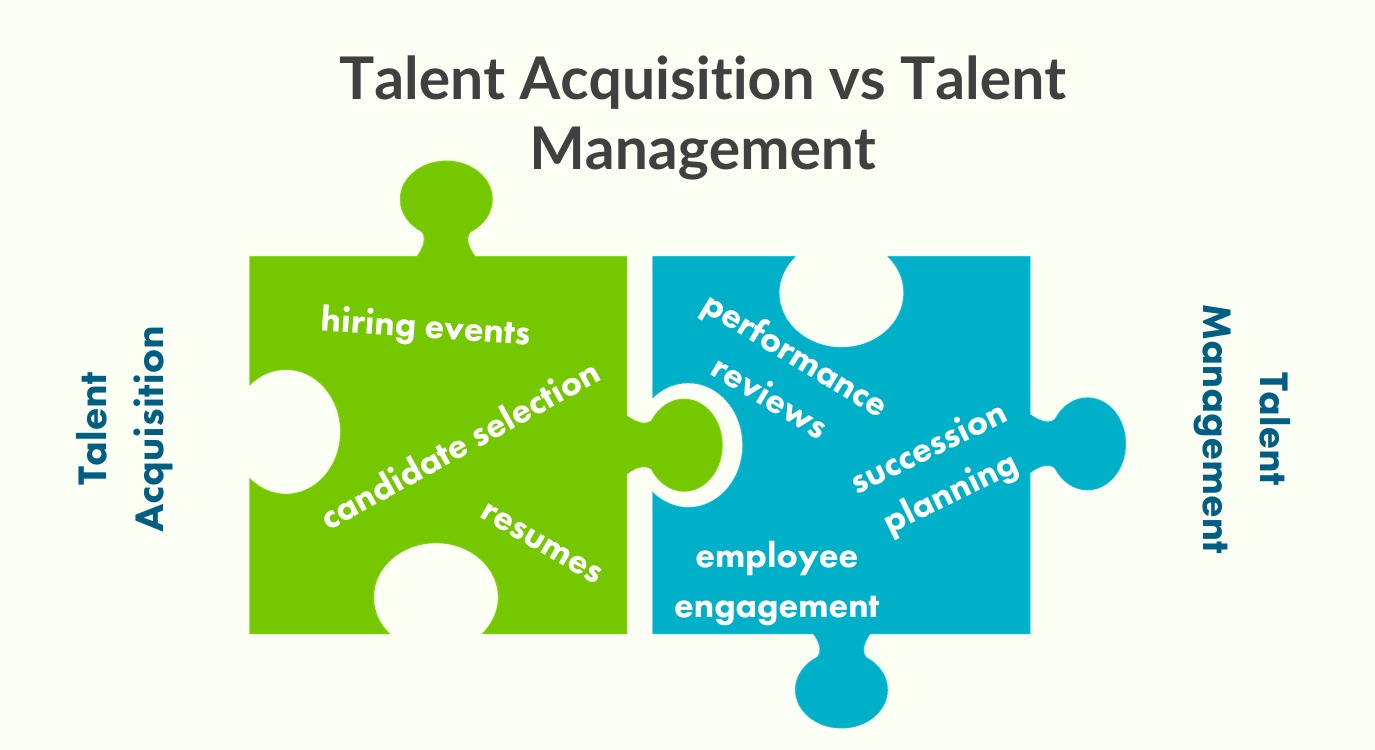 News
News
Software outsourcing offers unique opportunities and challenges in talent acquisition and talent management. By understanding the distinct benefits and strategies of each, businesses can create a balanced approach that maximizes the potential of their outsourced teams. Effective talent acquisition brings skilled professionals into the fold, while proper talent management ensures their continued growth and satisfaction. Together, these strategies form the foundation of a successful outsourcing model that drives innovation, productivity, and long-term success. Nowadays, businesses face constant challenges to stay competitive. Two important aspects of this challenge are talent acquisition and talent management, especially when it comes to software outsourcing. Outsourcing allows companies to access a wider pool of talent and manage their resources more effectively. This blog post explores the differences, benefits, and strategies involved in talent acquisition vs. talent management in software outsourcing.
Understanding Talent Acquisition in Software Outsourcing
Talent acquisition in software outsourcing means finding and hiring skilled professionals from outside the company. This involves identifying what the business needs, finding potential candidates, and choosing the best ones for the project.
Benefits of Virtual Talent Acquisition in Outsourcing
Access to A Huge Talented Sector
When companies outsource, they can gain access to a vast, international pool of skilled software developers. This is particularly advantageous for businesses located in regions where there is a scarcity of local talent. By outsourcing, these companies can find the expertise they need from various parts of the world, ensuring they have access to the best professionals available.
Cost Efficiency
Employing full-time staff is costly because it involves not only salaries but also benefits and other related expenses. Outsourcing offers a more economical solution as it allows companies to hire professionals on a project-by-project basis. This approach significantly reduces overall costs, making it a more budget-friendly option for businesses.
Flexibility and Scalability
Outsourcing provides companies with the ability to adjust their workforce size according to the demands of specific projects. This flexibility is essential for businesses that experience fluctuating workloads. By outsourcing, they can easily increase or decrease their workforce as needed, ensuring they can efficiently handle varying levels of work.
Common Challenges in Talent Acquisition
While there are many benefits of talent acquisition when outsourcing, there are also many challenges. Let's explore some of the most common challenges in this section.
Cultural and Language Differences
When working with a team from various parts of the world, there can be misunderstandings due to differences in culture and language. These differences can make it harder to communicate effectively. To address these challenges, it is crucial to practice effective communication and to be aware of and sensitive to cultural differences. By doing so, team members can work together more smoothly and avoid potential conflicts.
Quality Control
It can be challenging to ensure that the work produced by outsourced talent meets high standards of quality. To address this issue, it is important to set clear expectations from the beginning. Additionally, having regular check-ins with the outsourced team can help monitor progress and address any issues early on. Implementing strict quality control processes is also necessary to maintain the desired level of work quality.
Time Zone Differences
Coordinating tasks and projects with team members who are in different time zones can lead to delays and misalignment in schedules. This can make it difficult to keep the project on track. To manage this issue, good project management practices are essential. This includes creating a flexible schedule that accommodates the different time zones of all team members. By doing so, the team can work more efficiently and stay aligned with project deadlines.
Talent Management: Nurturing Outsourced Talent
Talent management focuses on taking care of and developing the skills of the outsourced team. It includes ongoing training, development, and performance monitoring to ensure the team consistently delivers high-quality work.
Benefits of Effective Talent Management
Increased Productivity
Well-managed teams are more productive and motivated. Continuous training helps team members stay updated with the latest technologies and improve their skills.
Consistency and Reliability
Proper remote talent management ensures the outsourced team consistently meets deadlines and maintains high-quality work. This reliability builds trust and strengthens the business relationship.
Employee Satisfaction and Retention
Investing in the growth and well-being of outsourced talent leads to higher satisfaction, reducing turnover rates and fostering long-term partnerships. This is one of the key benefits of remote talent management.
Strategies for Effective Talent Management
To maximize the benefits of talent management, companies can use several strategies. Some of the best strategies include:
Continuous Training and Skill Development
Providing ongoing training opportunities helps team members improve their skills and adapt to new technologies. This investment benefits both the individuals and the organization.
Clear Communication and Feedback
Establishing open lines of communication and offering constructive feedback ensure that the team understands expectations and areas for improvement. Regular check-ins and performance reviews are key components of this strategy.
Creating a Positive Work Culture
Building a supportive and inclusive work environment boosts morale and encourages collaboration. Recognizing and rewarding the contributions of outsourced talent fosters a sense of belonging and loyalty.
A Joint Approach to Talent Strategies
An integrated approach involves aligning talent acquisition and talent management strategies to create a smooth process from hiring to retention. This includes:
Strategic Planning: Aligning talent strategies with business goals ensures that the right skills are acquired and developed to meet project needs.
Collaboration Between Departments: HR, project managers, and team leaders must work together to ensure a cohesive approach to hiring and managing talent. This collaboration helps in identifying gaps and implementing effective solutions.
Use of Technology: Using advanced tools and software for recruitment, training, and performance monitoring can streamline both acquisition and management processes. Technologies like AI and machine learning can enhance candidate screening and personalized training programs.
Hire Nearshore IT Talent With Blue Coding
As a business, it's tough to keep track of everything that's going on, especially when it comes to complicated tasks such as talent hiring. This is where Blue Coding can help you! As a nearshore outsourcing agency, we specialize in connecting top software developer talent with our clients. To learn more about our services, you can book a free discovery call with us now!





